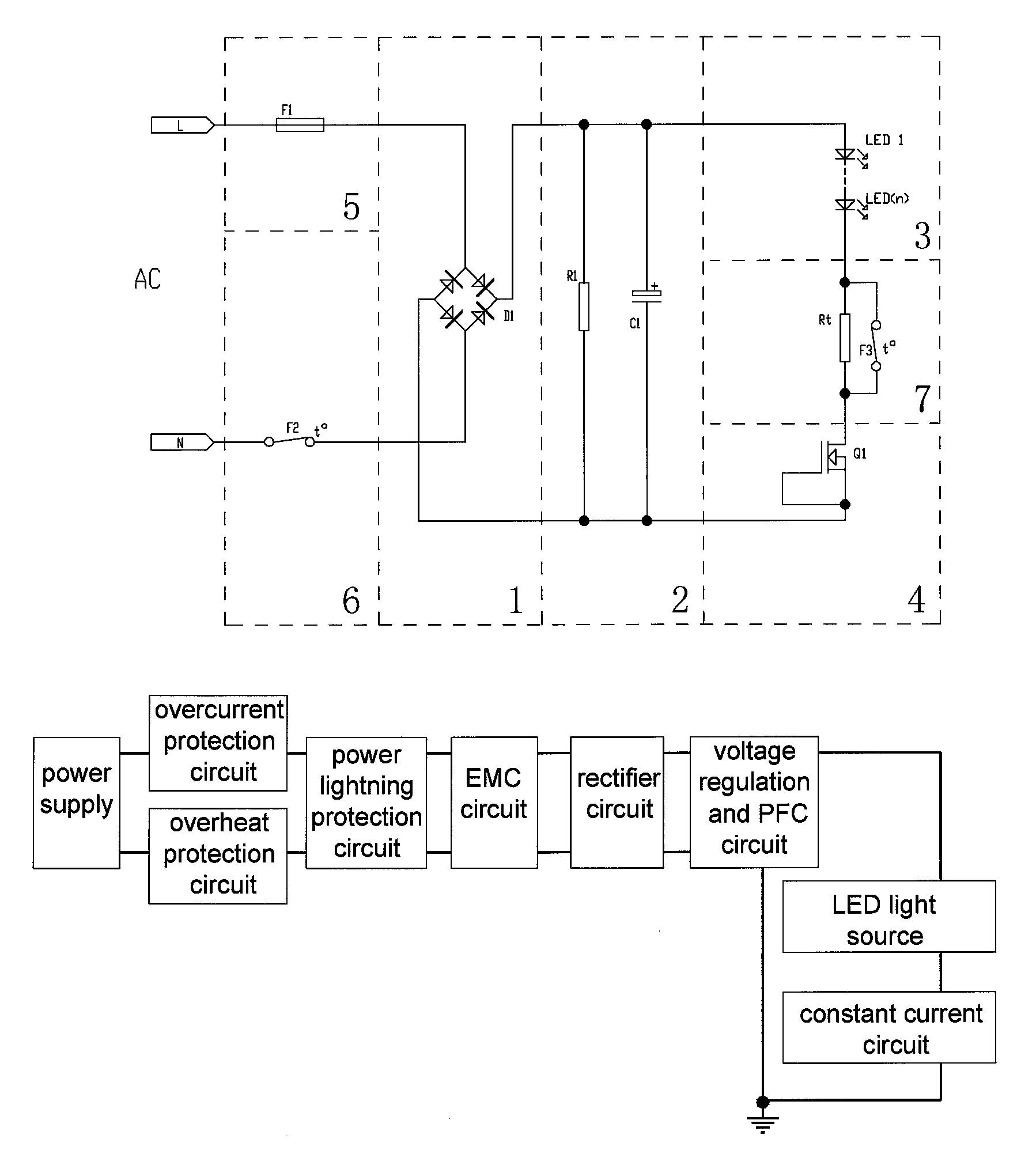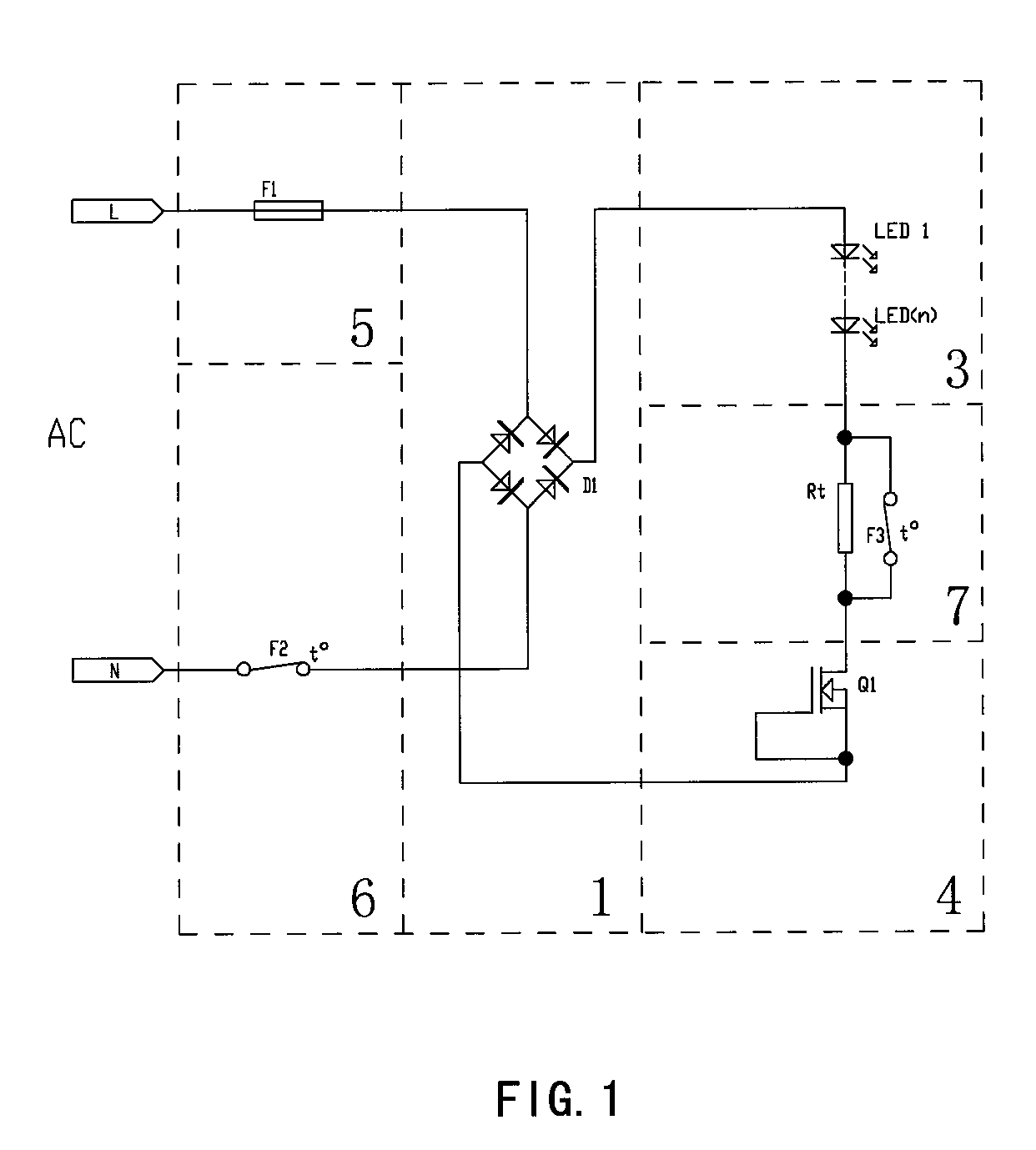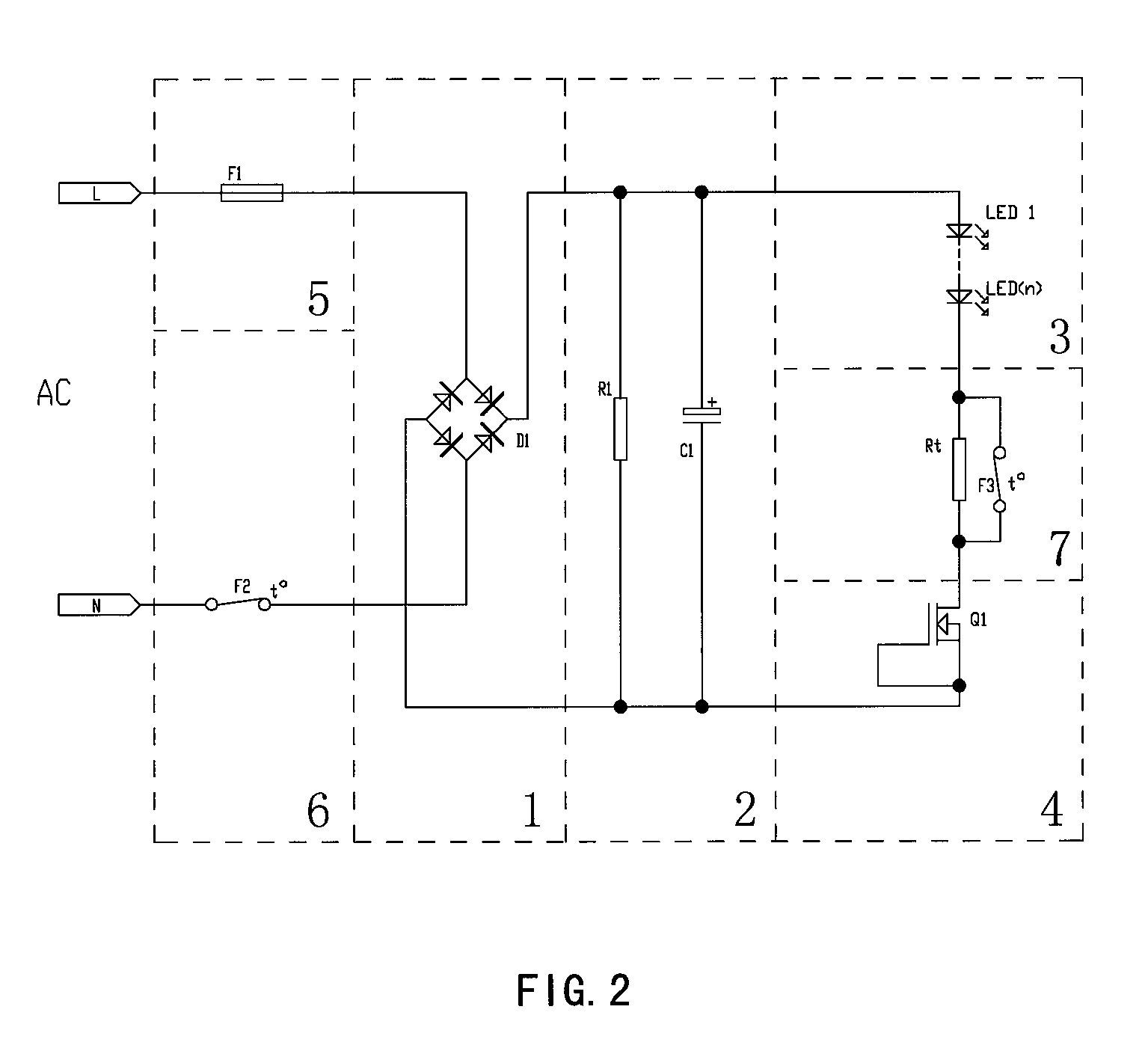LED lamp control circuit
a technology for controlling circuits and led lamps, applied in process and machine control, electric variable regulation, instruments, etc., can solve problems such as inability to realize lighting functions, shortened service life of leds, and rejection of lamps, so as to ensure stable operation of the whole circuit, reduce shock, and prevent damage to constant current source devices
- Summary
- Abstract
- Description
- Claims
- Application Information
AI Technical Summary
Benefits of technology
Problems solved by technology
Method used
Image
Examples
embodiment i
[0046]As shown in FIG. 1, FIG. 5, FIG. 6, FIG. 9 and FIG. 10, the LED lamp of this embodiment comprises a power board 101 for supplying power to an LED light source as well as a circuit controlling the LED lamp, a heat sink 102 for cooling the LED light source, a waterproof and dustproof lampshade 103 and a reflector 104, wherein the circuit controlling the LED lamp comprises a rectifier circuit 1 for changing an alternating current into a direct current, an LED light source load 3, a constant current circuit 4 that regulates voltage and current for the LED light source load 3, an overcurrent protection circuit 5, a first temperature control switch circuit 6 and a second temperature control switch circuit 7. The rectifier circuit 1 adopts bridge rectification with a rectifier bridge D1, and certainly can adopt other rectification modes for rectification. The overcurrent protection circuit 5 is connected to an input of a power supply with an overcurrent protection fuse F1 that fuses ...
embodiment ii
[0049]As shown in FIG. 2, FIG. 5, FIG. 6, FIG. 9 and FIG. 10, the difference between this embodiment and Embodiment I lies in: in this embodiment, the circuit controlling the LED lamp further comprises a filter circuit 2 connected behind the rectifier circuit 1 and comprising a filter capacitor C1 and a bleeder resistor R1, and can also adopt other filter circuits to supply a more stable current to the LED light source load 3. However, the power factor is affected to a certain extent due to addition of the filter capacitor.
[0050]The remaining features of this embodiment are the same as those of Embodiment I.
embodiment iii
[0051]As shown in FIG. 3 and FIG. 7 to FIG. 10, the LED lamp of this embodiment comprises a power board 101 for supplying power to an LED light source as well as a circuit controlling the LED lamp, a heat sink 102 for cooling the LED light source, a waterproof and dustproof lampshade 103, a reflector 104, and a sealed power box 105 for proofing the power board 101 against water and dust, wherein the circuit controlling the LED lamp comprises a rectifier circuit 1 for changing an alternating current into a direct current, an LED light source load 3, a constant current circuit 4 that regulates voltage and current for the LED light source load 3, an overcurrent protection circuit 5, a first temperature control switch circuit 6, a second temperature control switch circuit 7, a power lightning protection circuit 8, a power supply EMC circuit 9, a voltage regulation and PFC circuit 10, and a light source EMC circuit 11; the rectifier circuit 1 adopts bridge rectification with a rectifier ...
PUM
 Login to View More
Login to View More Abstract
Description
Claims
Application Information
 Login to View More
Login to View More - R&D
- Intellectual Property
- Life Sciences
- Materials
- Tech Scout
- Unparalleled Data Quality
- Higher Quality Content
- 60% Fewer Hallucinations
Browse by: Latest US Patents, China's latest patents, Technical Efficacy Thesaurus, Application Domain, Technology Topic, Popular Technical Reports.
© 2025 PatSnap. All rights reserved.Legal|Privacy policy|Modern Slavery Act Transparency Statement|Sitemap|About US| Contact US: help@patsnap.com



